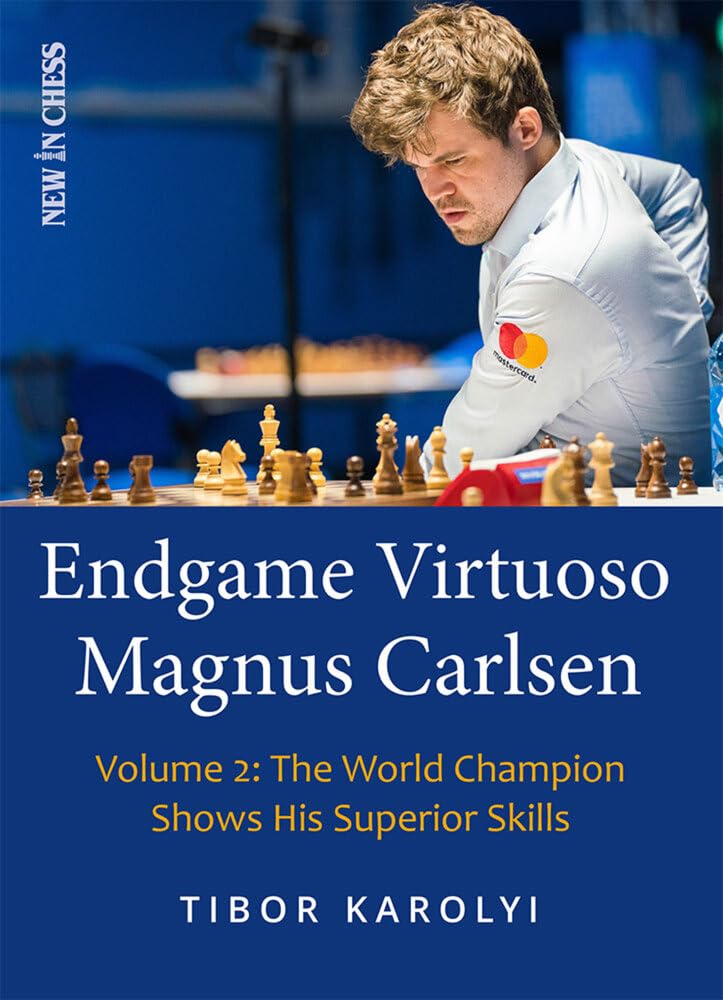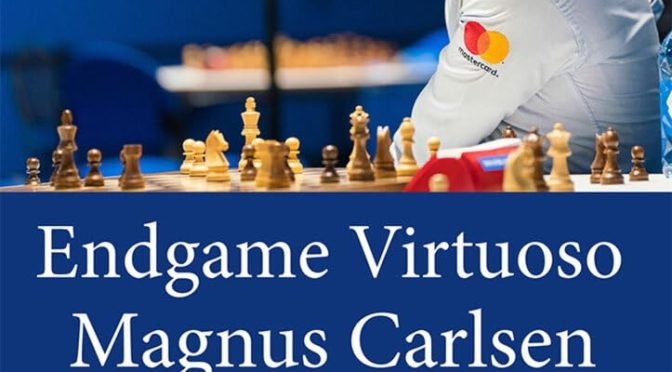From the back cover:
“Magnus Carlsen’s brilliant endgame play is one of the key reasons for his success. The World Chess Champion can win positions which look drawn to anybody else. And more than any other player, he is able to save bad endings.
For this second volume of Magnus Carlsen Endgame Virtuoso, International Master Tibor Karolyi has selected Carlsen’s best endgames from 2018-2022, whereas the first volume covered 1999-2017. Reviewing these new games and explaining what Magnus was doing, the author was thoroughly impressed. Even Carlsen, who in 2017 was already the best endgame player of all time with Anatoly Karpov, had managed to improve his skills further.
Carlsen has it all. He can find deep ideas, play very technically, and is exceptionally well-versed in strategic and tactical endgames. The author is convinced that this new selection contains even better and more instructive games than Volume one.
Karolyi explains the general ideas in the games and gives concrete variations. Exploring these annotated endgames, you will soon get a good sense of what is happening. You will find out that Carlsen does not rush unless it is necessary. You will learn how Carlsen increases the pressure and uses all available resources. And you will see that sooner or later, his opponents will start playing second-best moves, feeling uncomfortable, following up with some dubious decisions, and, finally, cracking.
Endgame Virtuoso Magnus Carlsen – Volume 2 is a highly instructive, inspiring and entertaining book. It will help you appreciate Magnus’ endgame magic and improve your skills in this important game phase.”
About the Author:
“International Master Tibor Károlyi was Hungarian Champion in 1984 and is renowned as both an author and a trainer. He won the Guardian Chess Book of the Year prize in 2007.”

You will probably agree that endings are increasingly important – at all levels – in chess today, and that Magnus Carlsen is the strongest human endgame player in the history of chess. So everyone will benefit from studying his endings.
It’s not quite as simple as that, though. The problem is that today’s top GM games are played at a level way beyond the comprehension of average club players. If you’re looking for a book that will do more to improve your endings, I’d recommend this book which was the subject of my last review.
On the other hand, studying the games of the world’s leading players will give you a wider appreciation of chess culture, and, with the guidance of a skilled instructor to provide excellent annotations, you’ll undoubtedly learn something as well as being inspired, in a more general way, to improve your chess.
In this book you’re in the safe hands of IM Tibor Karolyi, one of the best and most experienced annotators in the business, and one who has a particular gift for making difficult positional concepts comprehensible to the average player.
The first volume of this series covered Carlsen’s earlier career. Here we have 104 endgames from 2018 up to 2022, taken from games played at all time controls. As in my last review, the author takes a pretty broad view of what constitutes an ending.
Here, for example, is a position where Magnus missed the best continuation.
This is taken from the first play-off game in the 2018 Carlsen – Caruana World Championship match.
Carlsen played the obvious 24. Bxe6+, winning a pawn and, eventually, the game, although Caruana missed drawing chances on a few occasions.
He missed the very difficult 24. Rxd4!! Kf7 25. Kh1!!, a great prophylactic move according to Karolyi, so that an eventual Nxf3 won’t be check, when Black would have had no defence to Red1 followed by Rd6. This fascinating ending is analysed extensively over 3½ pages.
Black against Vallejo Pons (Karlsruhe/Baden-Baden 2019), Carlsen reached a pawnless ending with RB against BN.
You might think this is drawn, but Carlsen knew that, with the opposing bishops on different colour squares, Black is winning. If you buy this book you can see for yourself how he brought home the full point – and how his opponent could have made it harder for him.
Karolyi tells us that Fischer could have reached a similar ending against Browne (Rovinj/Zagreb 1970), but his annotations suggested that he believed the ending to be drawn.
This game, from move 12 to its conclusion 60 moves later, is covered in 4½ pages here.
It’s striking how often Magnus plays for mate with very limited material on the board.
Here, our hero was black in an Armageddon game against Nepomniachtchi (Stavanger 2021).
Nepo erred by playing 52. Bg7? here (Ke2 would have held), which Magnus met with 52… Rh1, with Rh2+ to follow.
Along with the games you also get a running commentary on Carlsen’s tournament performances over the period, helpfully putting the games into context as well as providing some gripping reading.
At the end of the book there’s an informative interview with Carlsen’s long-term second Peter Heine Nielsen, along with a useful Endgame Classification index and the expected index of names.
What you don’t get here is the opportunity for interactive learning. Unlike in many books from this publisher, there are no quizzes at the start of each chapter, nor does the author stop every few moves to ask you questions. You might well consider this not to be a problem in a book of this nature.
As usual from New in Chess, the production values are excellent. The English, although not always totally idiomatic, reads fluently. If you’re looking for a book on Carlsen’s endgames, and there are many reasons why you should be, you won’t be disappointed with this volume. You might also want to buy Volume 1 as well, and, in a few years time, Volume 3.
I consider this a first class book written by one of the best annotators in the business. While players of, say, 2000+ strength will perhaps learn most from it, all club standard players will find Carlsen’s endgames, especially as explained here, both instructive and inspirational.
If you want to look further before making up your mind you can find some sample pages here.
Richard James, Twickenham 18th October 2024

Book Details:
- Softcover: 256 pages
- Publisher: New In Chess; 1st edition (23 March 2023)
- Language: English
- ISBN-10:9493257703
- ISBN-13:978-9493257702
- Product Dimensions: 17.22 x 1.63 x 22.99 cm
Official web site of New in Chess.


